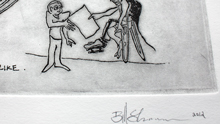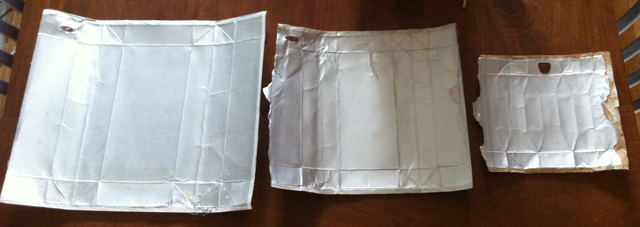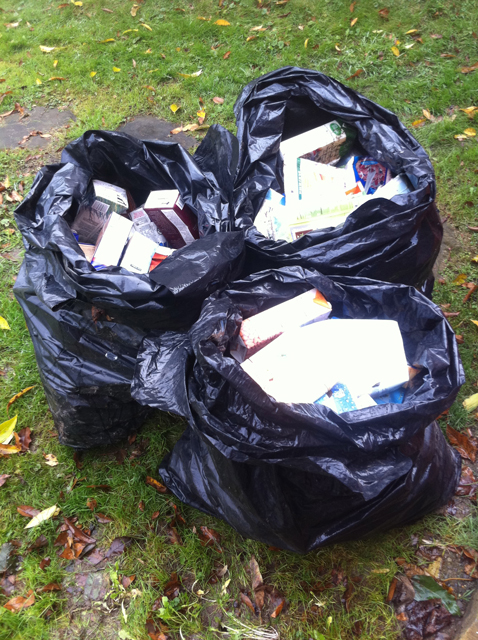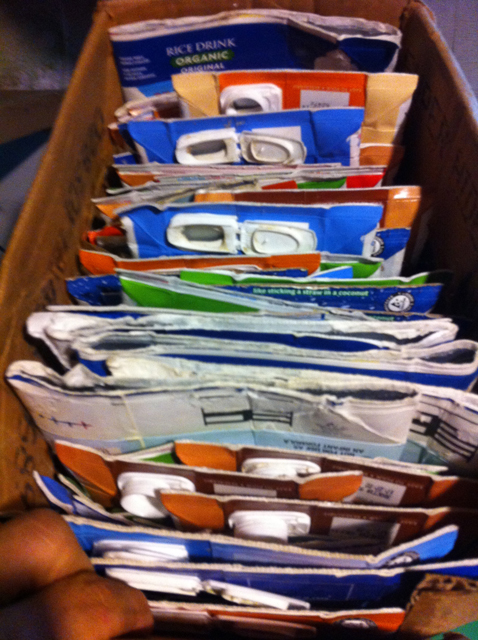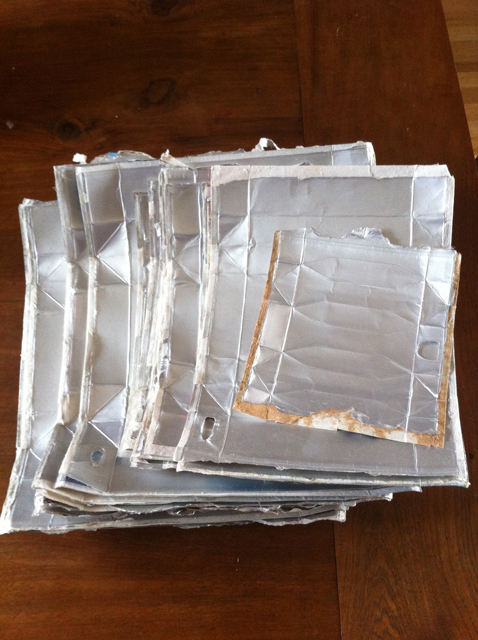TShirts, Stickers, Prints, Art Objects
WhatIsWhat 1.0 2003
Tetrapak Creations 1.1 : Acquisition Processing and Storage
In my haste to post up the step by step of breaking down a tetrapak I skipped over the various phases I have ongoing with my tetrapaks. The easiest way is to process them as they come. Taking on a bulk load or waiting till you have a bulk load is more daunting and might cause your tetrapak dedication to waver. Many restaurants throw these away ten or twenty a day. If your partner is a foodie like mine then there will be no shortage of these amazing little boxes.
ABOVE: three of the most common sizes I encounter. Note that the larger tetrapak on the left was processed later in my tetrapak journey as the edges are clean. The tetrapaks to the right were processed early on and reflect a certain ignorance as to the importance of clean edges.
Processing tetrapaks is not fun but the end result is well worth it. after the jump I show the various states of tetrapaks in my possession
Above: Raw Tetrapaks some unflattened some flat but not rinsed. A job for rubber gloves and rain water or dishwater.
ABOVE: Dried Flattened and stored for future processing. I find this way of storing the most convenient stopping point between raw and fully flattened.
ABOVE: Fully flattened stack of Tetrapaks of various sizes.

This Work, Tetrapak Creations 1.1 : Acquisition Processing and Storage, by Bill Shannon is licensed under a CC BY-NC-SA license.
